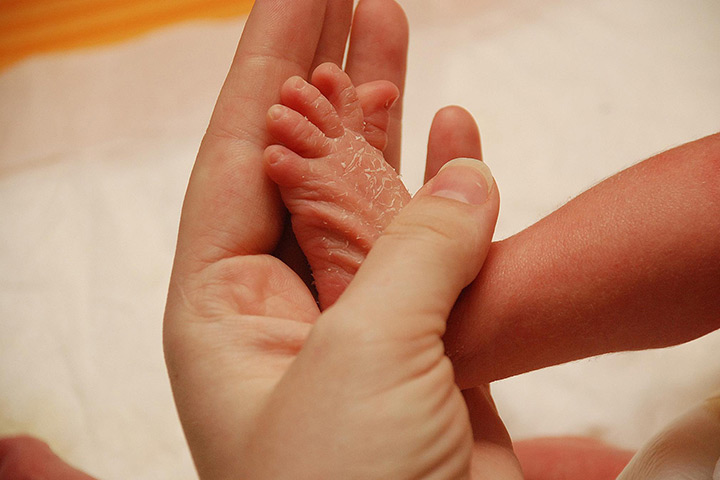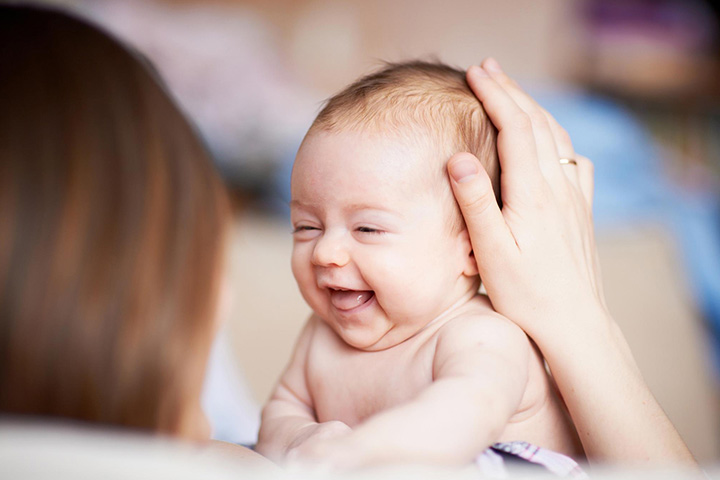
Image: Shutterstock
当医生终于宣布好消息,you start painting a fairytale picture about the moments with your little one. You may imagine holding a baby as adorably perfect as the ones in those TV commercials. While your angel is surely going to be endearing, he/she is not going to be anything like the image you have created in your mind. The skin might be wrinkly, the cheeks might not be so plump, and your little one may even look grumpy. If you have seen the pic of your niece or nephew right after birth, you may not be so baffled and surprised reading this. However, there is no need to be scared. It is pretty normal for all newborns to have certain distinctive physical features. Here, we list some of them:
1. The Odd Shape Of Their Head
The shape of a baby’s head generally tends to be oblong after birth, especially if it is a natural delivery. You may feel worked up, thinking that is how your little one’s head will look forever. But, that is absolutely not the case. Usually, the shape of the head changes within the next 48 hours. The bones inside a baby’s skull are intentionally flexible. The birth canal through which the baby comes out is tight and the mobility of bones allow the head to easily pass through the canal. And, this is what results in that elongated shape (1).
In fact, you might notice the angel’s head becoming more properly rounded over the next few days. Still worried? As part of the routine checkup of your little infant, the pediatrician will be thoroughly examining his/her head. And, if something is amiss, the doc will let you know for sure.
2. Their Spotty Skin
As established earlier, baby skin is not as soft, silky, and smooth as you see in the TV commercials. These little angels are pretty notorious for developing something that looks like odd transitory rashes. They might develop red spots that have a whitish or yellowish center. But, don’t panic. The spot may be a typical newborn rash. It might be scary since lesions can come, go away on their own, and then there is another new one. That skin area may become more reddish. But, it is usually not serious, does not cause any harm to your baby, and becomes alright on its own within seven days (2).
3. Hairy Them
After their birth, a baby’s skin might have downy, fine hair, which is known as lanugo. This is mostly seen on the newborn’s shoulders and back. It will more commonly be observed in premature babies. However, these fine, scaly hair that has gotten you all worried will peel off within a few weeks (3). At times, these hair are also present on the baby’s ears, face, or butt.
4. Their Soft Head
There are two soft areas present on the baby’s head. This is the area where the skull bones have not yet stemmed together. The soft spots are known as fontanels and are what allow the newborn’s relatively large head to pass through the tight birth canal. The fontanels also help with the rapid development of the little infant’s brain in the early life (4). While you need to be careful when it comes to your baby’s head, there is nothing else to get stressed about. Your baby’s head will typically develop within two years as the skull bones merge together.
You may have spent a lot of your time on the internet, trying to figure out your munchkin’s odd physical features. While some results might scare you off indicating that this might be a possible symptom for some medical condition, don’t jump to any conclusions. Keep consulting your pediatrician regularly and you are good to go!
















